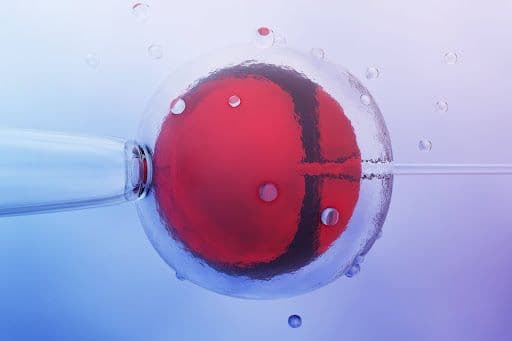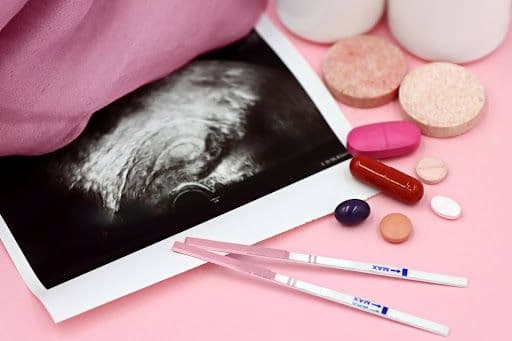Does Ovulation Cause Cramps? Is It Normal?
Cramps during ovulation stem from distinct hormonal shifts and feel different from menstrual cramps for many people. Learn how timing and sensations typically present, gentle ways to manage discomfort, and how combining cycle awareness in the Samphire app with brain-based care like Nettle™ helps people respond confidently.


We are all familiar with the "main event" of menstrual cramps that arrive with our period. But what happens when you feel that familiar twinge or dull ache in the middle of your cycle, weeks before you expect to bleed? You might pause and ask yourself: Do you get cramps during ovulation? Or is something else going on?
For many women, the middle of the cycle isn't just a time of high energy and peak fertility; it is also a time of physical discomfort. While cycle tracking apps might tell you that you are entering your "glow" phase, your body might be telling a different story.
The short answer is yes, ovulation cramps are real. But understanding why they happen and how your brain processes that pain is the key to managing them. At Samphire, we look at women's health through a brain-first lens. We know that while the pain starts in the ovaries, the way you experience it is determined by your nervous system.
In this guide, we will answer does ovulation cause cramping, explore how long do ovulation cramps last, and show you how tools like Lutea™ (our hormone-free wearable for North America) can help you feel more in control of your cycle.
Does Ovulation Cause Cramps? The Science of Mittelschmerz
First, let’s settle the big question: Does ovulation cause cramps? Yes. In the medical world, this is known as Mittelschmerz, which literally translates from German as "middle pain."
It is estimated that about 40% of women experience cramping during ovulation at some point in their lives. Unlike period cramps, which are caused by the uterus contracting to shed its lining, ovulation cramps are caused by the activity of the ovaries.
What is happening inside?
Does ovulation cause cramping directly? It’s actually the mechanics of the release that cause the sensation.
- Follicle Growth: Before the egg is released, it grows inside a small sac called a follicle. As this follicle expands, it stretches the surface of the ovary. This stretching can cause cramping prior to ovulation.
- Rupture: When the egg is finally released, the follicle ruptures. This releases follicular fluid and a tiny amount of blood into the abdominal cavity. This fluid can irritate the lining of your abdomen (the peritoneum), leading to the sharp or cramping pain you feel.
So, when you ask if ovulation causes cramps, the answer is a definitive yes it is a physical side effect of your body's natural fertility process.
When Do Ovulation Cramps Start?
Timing is everything when trying to distinguish cramps while ovulating from other types of pain. When do ovulation cramps start?
Typically, these cramps align with your fertile window. In a standard 28-day cycle, ovulation usually happens around day 14. However, because sperm can survive for up to 5 days, your fertile window opens earlier.
- Pre-Ovulation: You might feel a dull ache or pressure days before the actual event due to the follicle stretching. This is common cramping prior to ovulation.
- During Ovulation: The sharp, sudden pain of the rupture happens at the moment the egg is released.
- Post-Ovulation: The irritation from the fluid can cause lingering soreness for a day or two after the event.
Tracking your cycle with the Samphire App is the best way to confirm if your pain aligns with your predicted ovulation window. By logging your symptoms, you can see if that twinge on Day 14 is a recurring pattern.
How Long Do Ovulation Cramps Last?
One of the most common questions we get is: How long do ovulation cramps last?
Because the cause is singular (the release of one egg), the pain is usually short-lived compared to menstrual cramps.
- The Quick Twinge: For some, it is a sudden "pop" or stitch in the side that lasts only a few minutes.
- The Linger: For others, the irritation from the fluid can cause ovulation cramps that last for 24 to 48 hours.
If you are experiencing severe pain that lasts longer than two days, or if it is accompanied by fever or vomiting, this is not typical cramping during ovulation. It could be a sign of something else, like an ovarian cyst or appendicitis, and you should see a doctor.
Is It Normal to Cramp During Ovulation?
You might be wondering, is it normal to cramp during ovulation if your friends never complain about it?
Yes, it is normal. Pain perception varies wildly from person to person. Just because ovulation cramps are "normal" physiology doesn't mean they aren't uncomfortable.
What does it feel like?
- One-Sided: This is the biggest clue. Cramps while ovulating are almost always felt on one side of the lower abdomen whichever side is releasing the egg that month. You might feel it on the left one month and the right the next.
- Different from Period Cramps: While period cramps feel like a heavy, deep ache, ovulation cramps are often described as sharper, distinct, or like a pulling sensation.
The Brain-Pain Connection: Why It Hurts More for Some
Here is where the Samphire brain-first perspective changes the conversation. If the biological process of ovulation is roughly the same for everyone, why do some women feel debilitating cramps while ovulating while others feel nothing?
The answer often lies in the brain.
Research shows that our experience of pain is constructed by the brain. A phenomenon called "Central Sensitization" can occur, where the nervous system becomes hypersensitive to signals from the body.
If you have a history of painful periods (dysmenorrhea) or conditions like Endometriosis, your brain may have "learned" to amplify pain signals from the pelvic region. This means that the mild irritation of ovulation fluid which might be a 1/10 pain for someone else is interpreted by your sensitized nervous system as a 6/10 pain.
This is why simply treating the ovaries isn't always enough. We need to support the brain that is processing the pain.
When to be Concerned: Is it Ovulation or Endometriosis?
While ovulation cramps are normal, severe pain is a red flag. Conditions like Endometriosis can cause scar tissue (adhesions) to form around the ovaries.
When the ovary swells to release an egg, it pulls on this scar tissue, causing intense, ripping pain that is far worse than standard Mittelschmerz. If your cramping during ovulation is severe enough to make you miss work or curl up in a ball, it is worth investigating with a specialist.

Managing the Discomfort: A Brain-First Approach
If you are tired of just "dealing with it," there are ways to manage ovulation cramps that go beyond a hot water bottle.
1. Lutea™ (North America)
If you are in North America, you can explore Lutea™. This is a wearable headband designed to support women through the painful and emotional phases of their cycle.
Lutea™ is not a medical device in North America, but it utilizes a technology called tDCS (transcranial Direct Current Stimulation). This technology has been widely studied for its ability to modulate brain activity and support the regulation of pain perception and mood.
By targeting the areas of the brain that process pain, Lutea™ can help you manage the discomfort of the cycle without adding hormones to your body. It addresses the "volume knob" of pain in the brain.
2. Track with the Samphire App
Knowledge is your best painkiller. Using the Samphire App to track your cycle helps you predict exactly when do ovulation cramps start.
- Prediction: If you know day 14 is coming, you can prioritize rest and hydration.
- Patterns: Tracking helps you distinguish between cramping prior to ovulation and pain that happens afterward, which is useful info for your doctor.
3. Magnesium and Heat
- Magnesium: This mineral relaxes smooth muscles. Taking a steady supplement can help calm the uterus and intestines, potentially reducing the intensity of cramps while ovulating.
- Heat: A heating pad increases blood flow to the area, which helps flush out the irritating fluid released during ovulation faster.
Conclusion: You Know Your Body Best
So, do you get cramps during ovulation? If you do, know that it is a real, physiological event. You are not imagining it. Ovulation cramps are a sign your body is doing its job releasing an egg but that doesn't mean you have to suffer through the cramping during ovulation in silence.
Whether it is the stretching of the follicle causing cramping prior to ovulation or the fluid irritation causing pain afterward, understanding the mechanics empowers you.
By combining the brain-based support of Lutea™ with the insights from the Samphire App, you can move through the middle of your cycle with more comfort and control.
Ready to take a brain-first approach to your cycle? Check out Lutea™ and download the Samphire App today.
Frequently Asked Questions
Why am I cramping 3 days after ovulation?
If you are asking does ovulation causes cramps days after the event, the answer is usually related to fluid irritation. The fluid released with the egg can take time to absorb, irritating the abdominal lining for a few days. However, cramping 3+ days later could also be related to the rise in progesterone, which slows digestion and causes gas/bloating that mimics cramps. It could also be a sign of implantation if conception occurred, though that is typically a week later.
Is it normal to cramp during ovulation every month?
Yes, for about 20% of women, ovulation cramps are a monthly occurrence. For others, it happens randomly. Consistent, severe pain every month should be discussed with a doctor to rule out cysts or endometriosis.
Can ovulation cramps feel like period cramps?
They can, but usually, they are more one-sided. Period cramps are central; ovulation cramps pick a side. If you have general pelvic pain mid-cycle, it might be difficult to distinguish without tracking.
Related Articles

What Is Ovulation? Signs, Symptoms, and the Brain Science Behind Your Fertile Window
Ovulation is more than just the release of an egg; it's a brain-driven event that influences your entire body and mind. This guide explains how the hypothalamus and pituitary gland coordinate hormonal signals that trigger ovulation, when it occurs in your cycle, and the key signs both physical and emotional to watch for. Learn how stress, sleep, and lifestyle affect ovulation, explore science-backed tracking methods, and discover how brain-based tools like Samphire help you understand and support your cycle health.

How Long Does Ovulation Last? Understanding Your Fertile Window
Ovulation itself lasts just 12–24 hours, but your fertile window extends up to six days thanks to sperm surviving in the body for several days before the egg is released. Our guide explains when ovulation happens, how to identify your most fertile days, and what affects your cycle. Learn to recognize your body’s ovulation signals, understand how brain and hormone interactions shape fertility, and explore tools to track your cycle for conception, contraception, or overall health awareness.